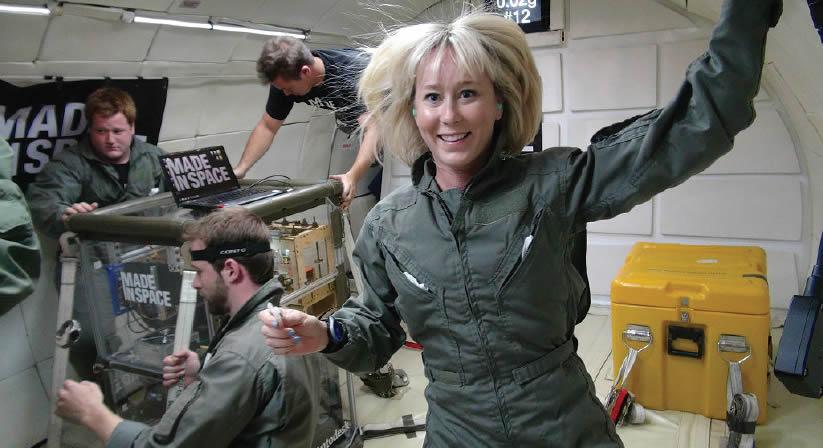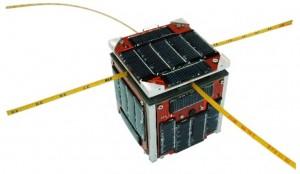Last week we got the huge news that Made In Space would be launching the very first 3D printer to the International Space Station in August, months ahead of schedule, following their passing of the final NASA tests. This  first mission will allow the company to work along with NASA to test out the functionality of this incredible machine in microgravity conditions.
first mission will allow the company to work along with NASA to test out the functionality of this incredible machine in microgravity conditions.
While all of this is happening, private enterprise is taking space travel to entirely new levels. Elon Musk’s SpaceX, driven by both profits and a fascination with outer space, has made more progress in the last five years building innovative spacecrafts, than NASA had in the previous twenty. SpaceX has been an incredible example of what happens when the funding, and organization of big government converge upon the innovation engine of a profit driven free enterprise.
What has been a bit underappreciated in the recent news about Made In Space, is that they too are a free enterprise, driven by profits, as well as a love for this technology. Sure, it’s awesome that within a couple on months we will have a 3D printer orbiting the earth on the International Space Station (ISS), capable of manufacturing mission supplies out of simple, unorganized materials. What’s even more incredible is how this technology will soon be used by not only astronauts working for NASA, but potentially dozens, or perhaps even hundreds of companies looking to 3D print items in space.
Made In Space has made it very clear that the company will take the knowledge they learn from this August mission, and apply it to the construction of a permanent Additive Manufacturing Facility (AMF) on the ISS. This permanent facility will be larger, and have the capability of printing in numerous other materials. What’s even more incredible, is that you or I could commission the company to 3D print objects in space for us.
“Our second printer, the AMF, will be commercially available,” explained Grant Lowery, marketing and communications manger for Made In Space, to 3DPrint.com. “We’re already talking to businesses, researchers, artists, etc., about what they’d like to print on the ISS. When the AMF goes up to the ISS, it will be utilized by NASA but it will also be available for contracted use by people and businesses on Earth. We may also be doing additional technological demonstration prints on the first printer, after the first series of test items, and so we’re working with a variety of external companies and individuals to determine potential prints for that printer as well. We’re inviting people to get in touch with us to begin to discuss printing opportunities for both printers.”
That’s right, we will all, in short time, be able to have objects 3D printed for us in Space. Now, some of you may be wondering, ‘why would any company or individual want to 3D print in space?’ There are a few reasons, which Lowery explained to us below.
“There is promotional appeal for some entities, but functional uses are the main draw. I can’t get into specific examples yet due to confidentiality, but one general example is the ability to 3D print cubesat (small satellites) components, have the cubesats assembled and then placed into orbit, as opposed to having the cubesats made on Earth and having to launch them to space. The appeal of using additive manufacturing in space is that having a flexible manufacturing tool on-site allows astronauts and businesses to make what they need, there, instead of having to launch everything from Earth.”
For those unfamiliar with the term, cubesats are miniaturized satellites which companies, universities, as well as individuals can send into space for a variety of experiments. They usually have a volume of one liter, and weigh no more then 1.33 kg. We have seen cubesats launched for a variety of interesting applications, and the uses for such satellites within business and research continue to grow. The ability to have these mini-satellites printed and assembled in space, without the need to actually launch the satellites from earth, could save a tremendous amount of time and money.
It will certainly be interesting to see what other creative applications for Made In Space’s Additive Manufacturing Facility come about, as we get closer to the time when the private sector has access to such technology. Let us know what you think about Made In Space’s plans to open up 3D printing to non-governental organizations, businesses, and individuals in the Made In Space forum thread at 3DPB.com
Subscribe to Our Email Newsletter
Stay up-to-date on all the latest news from the 3D printing industry and receive information and offers from third party vendors.
You May Also Like
Profiling a Construction 3D Printing Pioneer: US Army Corps of Engineers’ Megan Kreiger
The world of construction 3D printing is still so new that the true experts can probably be counted on two hands. Among them is Megan Kreiger, Portfolio Manager of Additive...
US Army Corps of Engineers Taps Lincoln Electric & Eaton for Largest 3D Printed US Civil Works Part
The Soo Locks sit on the US-Canadian border, enabling maritime travel between Lake Superior and Lake Huron, from which ships can reach the rest of the Great Lakes. Crafts carrying...
Construction 3D Printing CEO Reflects on Being Female in Construction
Natalie Wadley, CEO of ChangeMaker3D, could hear the words of her daughter sitting next to her resounding in her head. “Mum, MUM, you’ve won!” Wadley had just won the prestigious...
1Print to Commercialize 3D Printed Coastal Resilience Solutions
1Print, a company that specializes in deploying additive construction (AC) for infrastructure projects, has entered an agreement with the University of Miami (UM) to accelerate commercialization of the SEAHIVE shoreline...
































